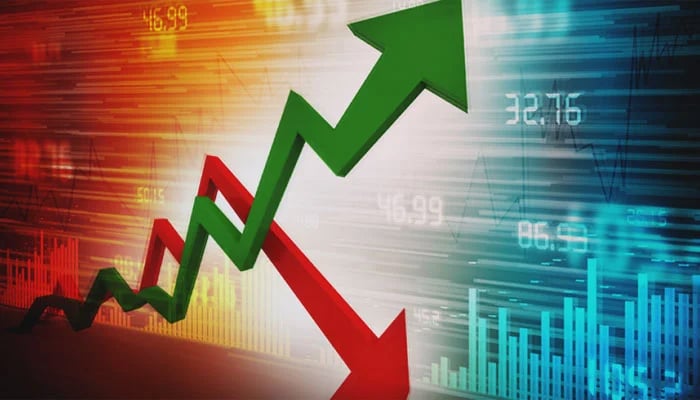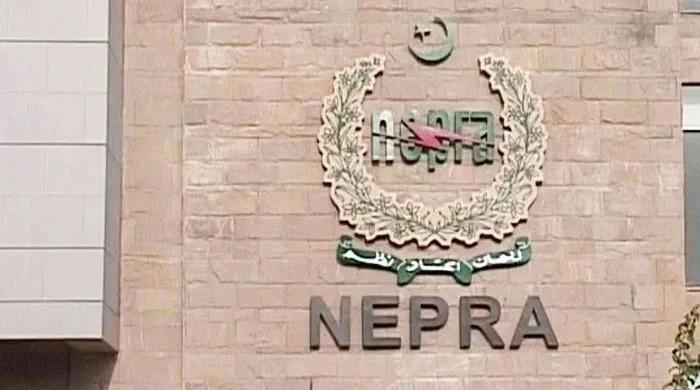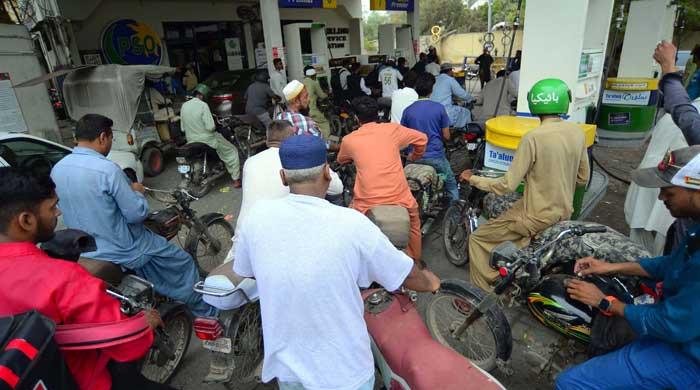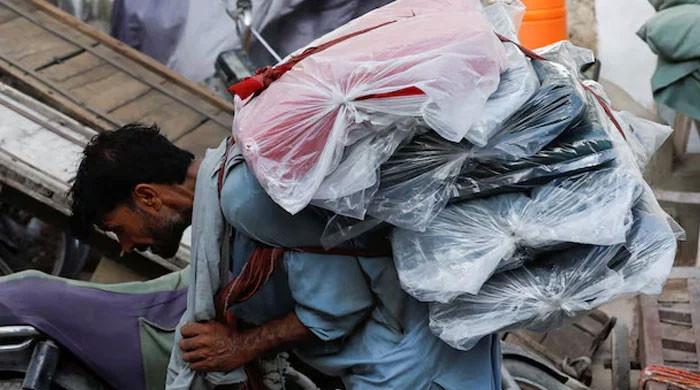Inflation reading in Pakistan clocks in at 8.4%
Inflation reading remains unchanged despite a hike in prices of perishable food items, cost of transportation
September 01, 2021

- Inflation rates rises by 0.6% on a month-on-month basis.
- Core inflation slows to 6.3% in urban areas in August.
- Analysts expect the State Bank of Pakistan to maintain the policy rate in September.
KARACHI: The inflation rate in the country remained unchanged at 8.4% in August owing to significant changes in three indices, including food, transport, and construction.
Measured by the Consumer Price Index (CPI), the average rate of increase in prices of goods and services stood at 8.4% in August, reported the Pakistan Bureau of Statistics (PBS) on Wednesday. The inflation reading remained at 8.4% in July.
Speaking to Geo.tv, an analyst from Arif Habib Limited, Sana Tawfiq, said that the inflation rate was according to the market expectation.
She added: “A slight increase of 0.6% on a month-on-month basis came on the back of three sectors — food, transport, and housing.”
Tawfiq elaborated that the increase in the prices of perishable items in the food group, rising oil prices internationally and locally, and the surge in LPG prices in Pakistan have impacted the three sectors. Resultantly, this impact was slightly observed in the inflation rate.
The national data collecting agency has reported the latest inflation figures ahead of the Monetary Policy Committee meeting scheduled this month. The meeting will set the new policy rate for the next two months.
The AHL analyst stated that in line with the State Bank of Pakistan’s pro-growth policy, the market expectation is that the central bank will keep the policy rate unchanged this time as well. “However, SBP may increase the rate in the next MPC meeting,” she added.
The 8.4% inflation in August was in the range set by the federal government. Earlier, according to the monthly economic outlook report for the month of August — prepared by the economic advisory wing of the finance ministry — year-on-year inflation was expected to fluctuate around 7.6% to 9.2% in August.
The Wholesale Price Index (WPI), which captures prices in the wholesale market, also rose sharply by 17.7% in August over the same month a year ago.
The government has set the average inflation target for the ongoing fiscal year at 8.5%, indicating that the year-on-year inflation may remain in double digits in the fiscal year 2021-22.
The PBS reported that the overall inflation rate slowed down in the urban area, meanwhile the inflation in rural areas recorded an increase. The inflation rate in urban areas slowed down to 8.3% in August and in rural areas surged to 8.4% over the same month of the last year.
The food inflation rate in cities stood at 10.2% and in villages and towns at 9.1%, which was significantly higher than the previous month. Non-food inflation was recorded at 7.2% in urban areas and at 7.7% in rural areas.
Core inflation — calculated by excluding food and energy items — dropped to 6.3% in urban areas in August, reported the national data collecting agency.
Sana Tawfiq said that reduction in core inflation is a “good indicator”.
The food group saw a price increase of 9.96% in August from the same month a year ago. Within the food group, prices of non-perishable food items dipped to 11.09% on an annualised basis but the prices of the perishable goods were effectively reduced by 3.38%. The inflation rate for the housing, water, electricity, gas and fuel group — having one-fourth weight in the basket — reduced to 7.96% last month.
Average prices for the clothing and footwear group reduced 9.34% in August. Prices related to transportation reduced 8.08%.
In August, tomatoes prices skyrocketed 36.34%, followed by a 23.68% surge in egg prices, 20.47% increase in prices of chicken, nearly 14% meat, according to the PBS. The milk prices increased 10.64% last month.
The majority of the prices increased due to a hike in commodity prices in the international market and a fall in the value of the rupee.
The average inflation rate during the first two months (July-August) stood at 8.38% as compared to 8.74% in the same period of the last fiscal year, according to the PBS.
Meanwhile, Tawfiq added: “If no major supply shock is seen in terms of increase in oil, commodity prices internationally or rupee devaluation, then inflation is expected to remain in the range of 7%.”











